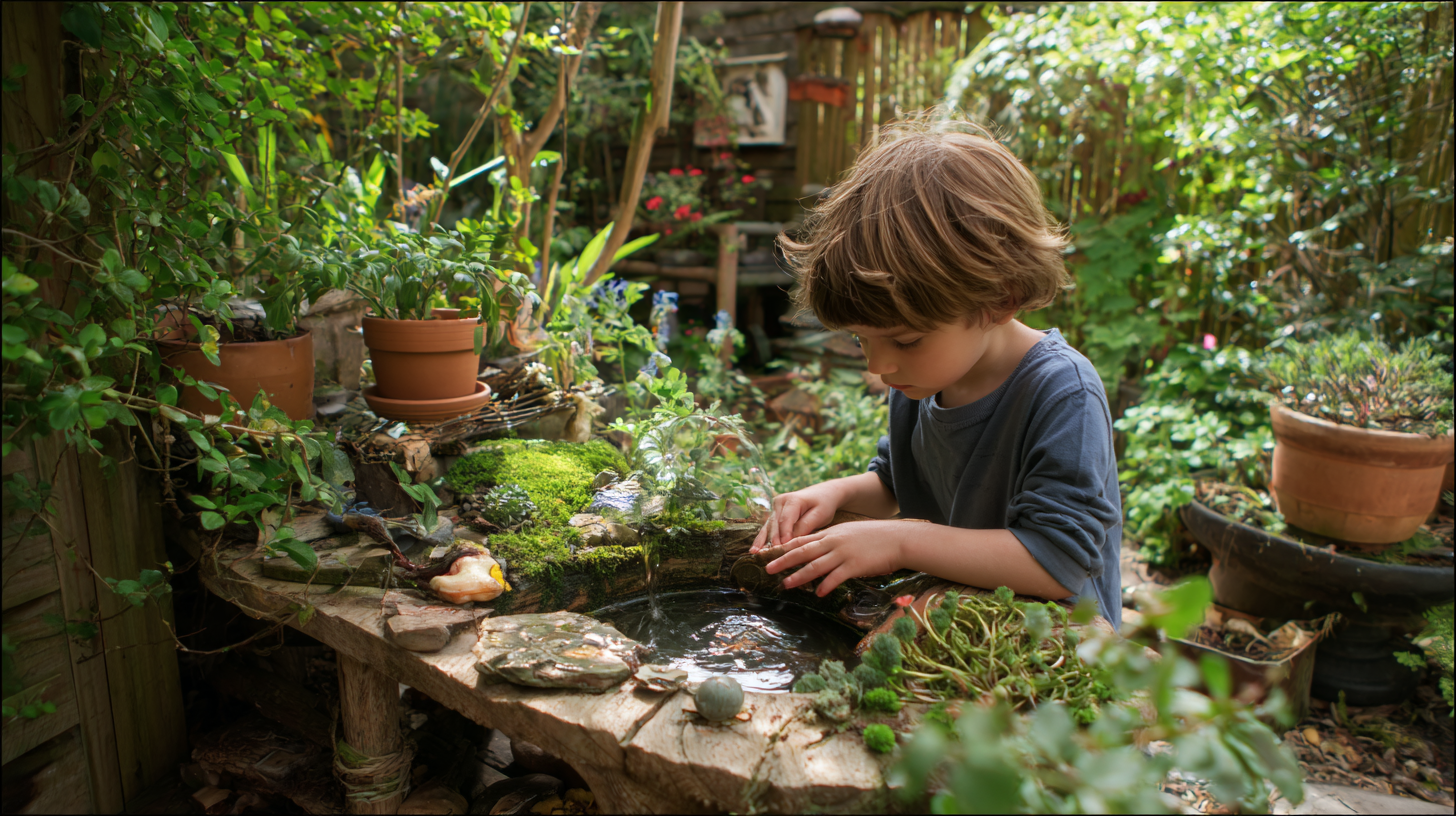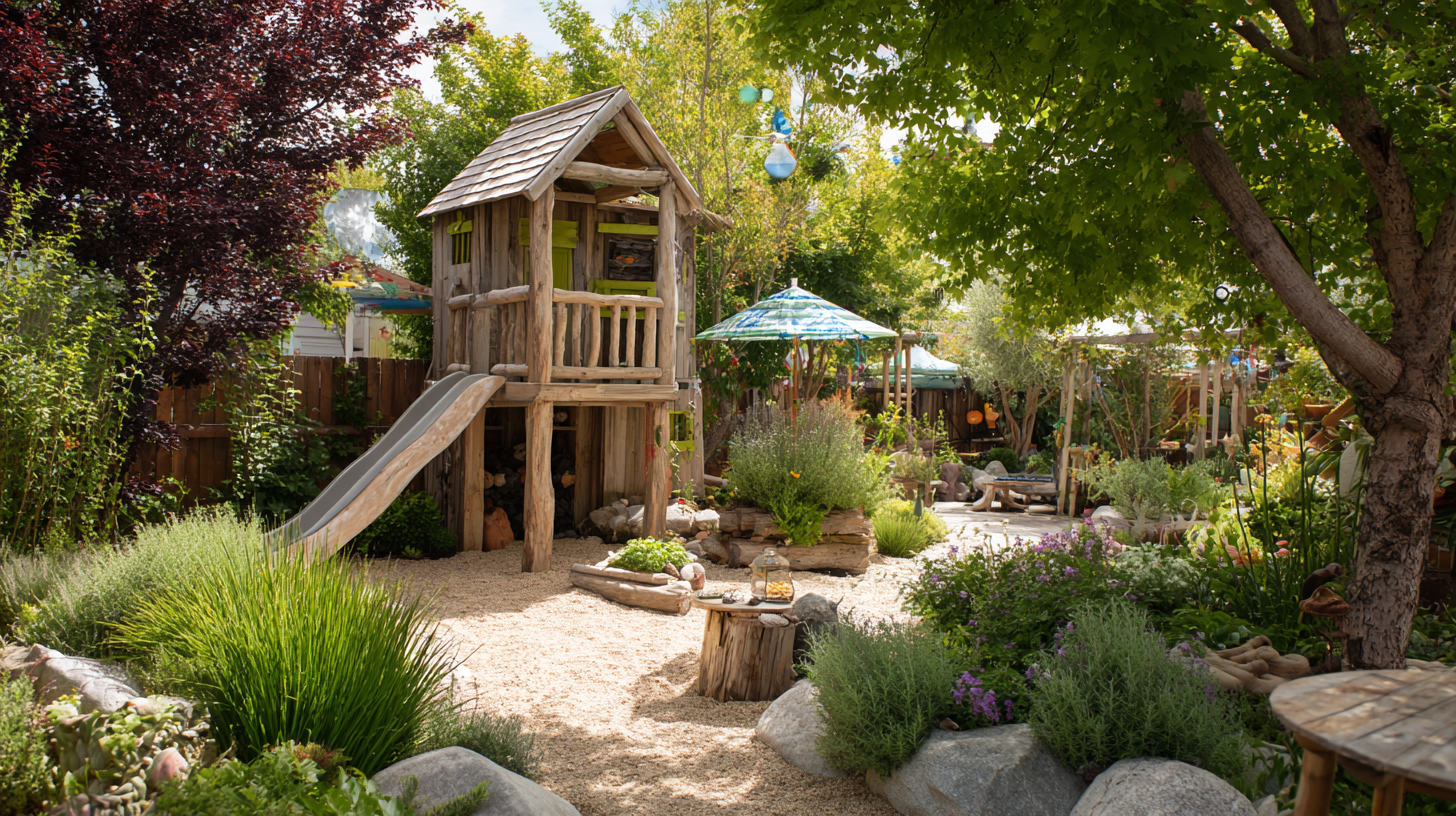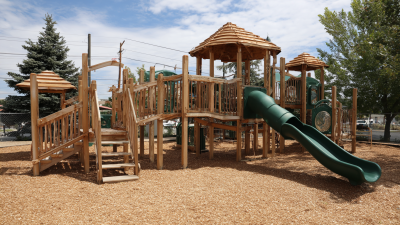 +86-13901441113
+86-13901441113




Creating an engaging Garden Play space for kids and adults is essential for fostering creativity, physical activity, and social interaction. According to the National Recreation and Park Association (NRPA), the presence of play spaces contributes significantly to the overall well-being of communities. In their research, they noted that access to well-designed outdoor play areas encourages families to spend more time outdoors, which can lead to increased physical activity levels. In fact, children who regularly engage in outdoor play are more likely to develop healthy lifestyle habits that extend into adulthood.

Furthermore, studies published in the Journal of Environmental Psychology highlight the profound impact that green spaces can have on mental health. Access to garden play areas not only provides a platform for children to explore their surroundings but also allows adults to reconnect with nature, reducing stress and improving mood. As more families seek to cultivate their outdoor spaces, understanding the elements that contribute to an engaging garden play environment is crucial. This article will explore the principles behind creating a versatile Garden Play space that caters to both the whimsical needs of children and the restorative desires of adults, ensuring that everyone can enjoy the benefits of outdoor play.
Creating an engaging garden play space that appeals to both kids and adults requires a thoughtful blend of fun and function. According to a report by the National Wildlife Federation, incorporating elements like climbing structures, sensory gardens, and interactive water features can significantly enhance the play experience. These types of designated play zones not only foster creativity and exploration among children but also provide adults with areas for relaxation and social interaction. For instance, sensory gardens, which incorporate fragrant plants, textured surfaces, and colorful blooms, can stimulate children's senses while offering adults a serene environment to unwind.
When designing these multifunctional spaces, it's essential to ensure that safety and accessibility are prioritized. The American Society of Landscape Architects suggests that at least 13% of outdoor play areas should be designed for children with disabilities, promoting inclusivity. Additionally, use of durable materials that withstand weather and wear can prolong the longevity of the play zones. By blending natural landscapes with innovative play equipment, garden spaces can become vibrant hubs for family bonding, community interaction, and personal well-being, creating an environment where every generation can thrive in both play and relaxation.
Creating a garden play space that engages both kids and adults can be an enriching experience, especially when nature is incorporated thoughtfully. Selecting kid-friendly plants is crucial; consider integrating fragrant, edible, or vividly colored plants that attract children’s curiosity. For instance, herbs like mint or basil can inspire sensory exploration, while colorful flowers can serve as a visual delight. Adding features like raised garden beds or small fruit trees not only enhances the aesthetics but also provides hands-on learning opportunities about gardening and nature.
In addition to plants, incorporating design elements that promote play and interaction with the environment is essential. Building structures like treehouses or life-sized chessboards encourages active engagement and physical activity. Therapeutic gardens, like those recently opened in various locations, demonstrate the importance of creating spaces that cater to different age groups, ensuring both seniors and children have areas to enjoy. These nature-rich environments foster joy and connection, making them ideal for families looking to create lasting memories together. As communities strive to build child-friendly green spaces, merging play with nature can significantly enhance the overall well-being of families, creating a vibrant tapestry for exploration and fun.

Creating an engaging garden play space requires integrating interactive elements that appeal to all ages. For children, consider incorporating sensory pathways made from various materials like smooth stones, soft grass, and crunchy leaves. This tactile experience not only entertains but also stimulates their senses, encouraging exploration and imaginative play. Additionally, features such as mini excavation sites where kids can dig for “treasures” like rocks or fossils can inspire curiosity about nature and archaeology.
For adults, incorporating spaces for gardening or relaxing adds depth to the play environment. Raised garden beds can be designed for easy access, enabling adults to partake in planting herbs or flowers while their children play nearby. Setting up comfortable seating areas with shade to read or socialize can enhance the garden’s appeal. Including features like an outdoor kitchen or fire pit allows for gatherings, bringing families together while participating in activities such as cooking or storytelling, making the garden a truly multifunctional space for all ages.
Creating a safe outdoor environment for both children and adults is paramount when designing a garden play space. This can be achieved by establishing clear boundaries using natural elements such as hedges or fences, which not only enhance the aesthetics of the garden but also provide a defined play area. Smooth surfaces should be prioritized to minimize trip hazards, with materials like rubber mulch or grass that cushion falls and support safe movement.
In addition to physical structure, incorporating safety features such as shaded areas helps prevent overheating during sunny days. Installing secure play equipment that adheres to safety standards ensures that children can explore and engage in physical activities confidently. Furthermore, adult supervision can be facilitated by creating comfortable seating areas nearby, allowing adults to monitor children while enjoying the space. By strategically planning both the layout and amenities of the garden, families can enjoy a fun, secure play space that caters to all ages.
Creating a garden play space that resonates with both kids and adults is an exciting opportunity to reflect your family's interests and values. One of the key aspects of personalizing your space is to incorporate elements that reflect what your family loves. Whether it's a cozy reading nook nestled under a tree, a small vegetable garden for budding chefs, or a vibrant flower patch attracting butterflies, each addition can spark joy and activity.

Tips: Consider the age and interests of family members when customizing your garden. For younger children, include fun features like a sandbox, climbing structures, or whimsical fairy gardens. For adults, think about creating comfortable seating areas, perhaps with hammocks or outdoor furniture, where they can relax and enjoy the vibrant surroundings.
Incorporating art can also add a unique touch to your garden. Tips: Encourage family members to contribute their artistic flair by painting stones, creating DIY garden signs, or even designing sculptures from recycled materials. This personal involvement not only beautifies the space but fosters a sense of ownership and pride among all family members, making it a truly special environment for everyone to enjoy.





